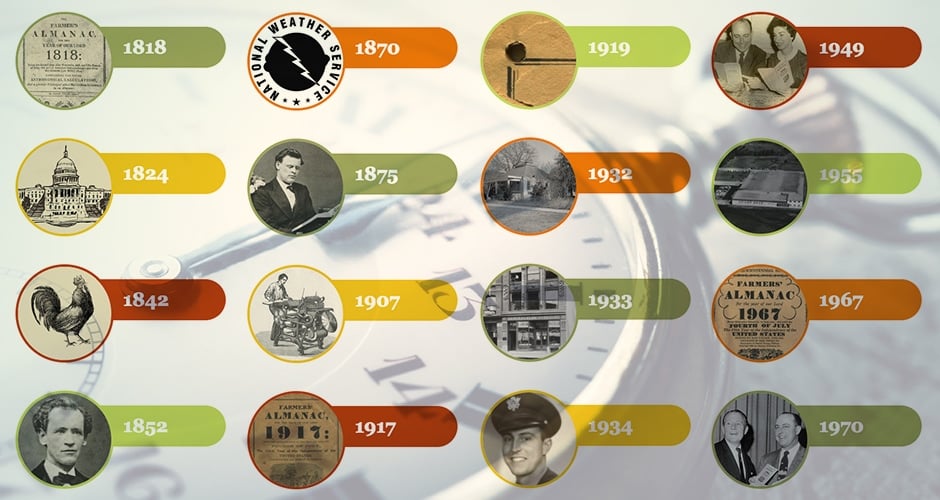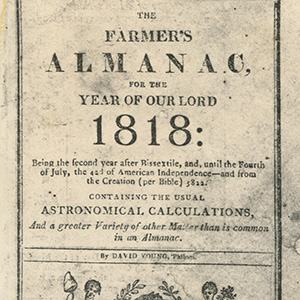
1818
The 1st edition of the Farmers’ Almanac is released, by David Young, Philom. and publisher Jacob Mann (of Morristown, New Jersey).

1824
The Almanac decrees “Congress speaks too much and spends too much.” We haven’t felt the need to be political since.
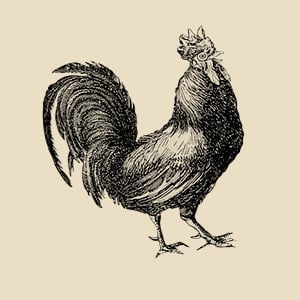
1842
Woodcuts (engraved illustrations) are added to the calendar pages.
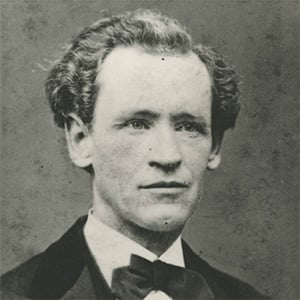
1852
Editor David Young dies; Astronomer Samuel Hart Wright (above) succeeds him as editor.
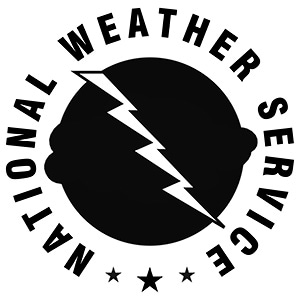
1870
Farmers’ Almanac releases its 52nd long-range forecast. The National Weather Service is founded.
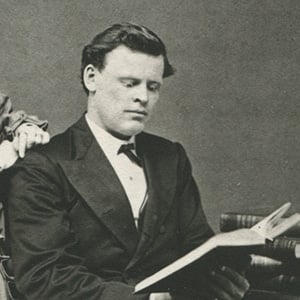
1875
Samuel’s son, Berlin Hart Wright, leaves teaching to become his father’s assistant, and later becomes editor when Samuel dies.
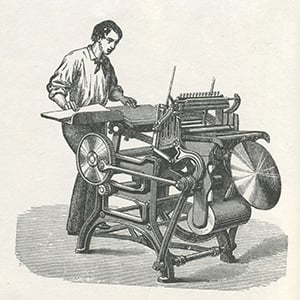
1907
William Jardine, Walter Frutchie, William Philtower, John Ten Eyck, and D. M. Merchants purchase the rights and create Almanac Publishing Company of NYC.
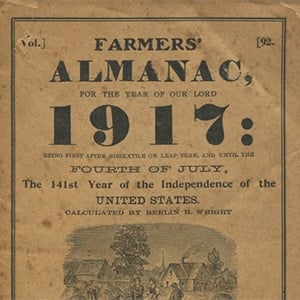
1917
The 100th edition of the Farmers’ Almanac is published!

1919
The hole on the cover gets automated as part of print production.
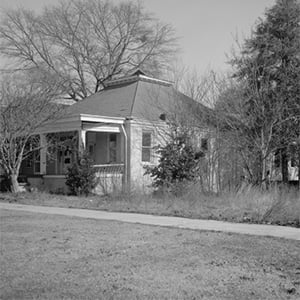
1932
First time the Farmers’ Almanac uses the word “lawn” instead of “farm.”
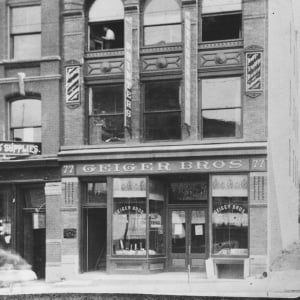
1933
Publishing is turned over to Geiger Bros. (then located in Newark, New Jersey) who produce it for the Almanac Publishing Company.

1934
William Jardine turns editing over to Ray Geiger, a recent Notre Dame graduate, who continues to edit the Almanac from overseas while serving his country in World War II (1939–1945).
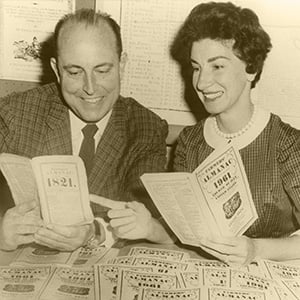
1949
Ann and Ray Geiger purchase the rights to the Almanac Publishing Company and the Farmers’ Almanac. Geiger Bros. alone now owns, edits, produces, and distributes the Farmers’ Almanac.
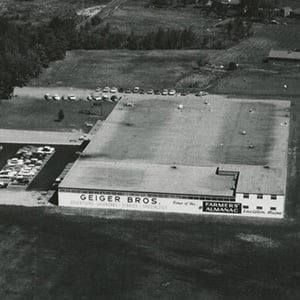
1955
Geiger Bros. (along with the Farmers’ Almanac) moves to its current office in Lewiston, Maine.
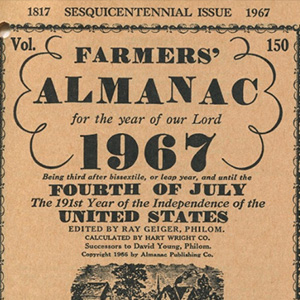
1937
150th edition of the Farmers’ Almanac is printed!
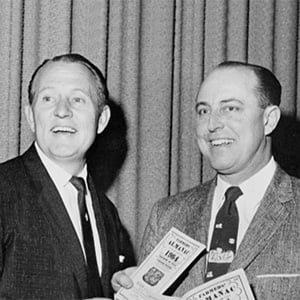
1970
Art Linkletter calls Ray Geiger “the most interviewed man in America,” based on over 17,500 appearances on radio and TV, and at least 3,000 newspaper and magazine interviews.
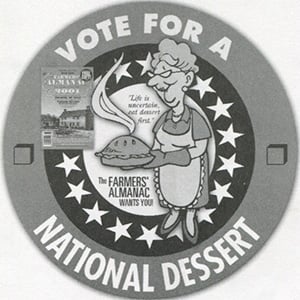
1975
Human interest crusades appear in the Farmers’ Almanac, with Ray annually campaigning for changes such as zapping the 9-Digit ZIP code, adding color to our currency, proposing a new National Anthem, voting for a National Dessert, and many more!
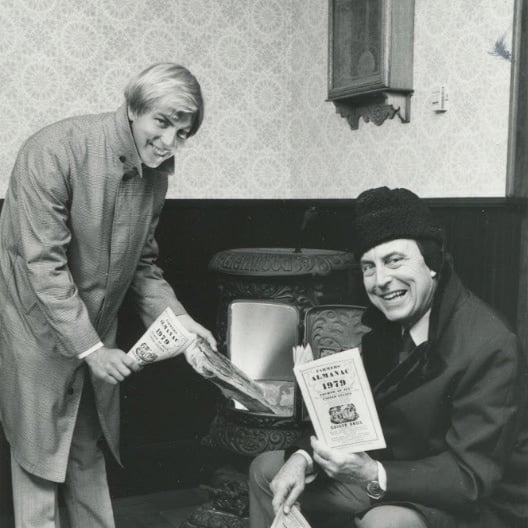
1979
Ray’s son, Peter Geiger, is named Associate Editor (and Philom.).

1983
To protect its secret weather formula, “Caleb Weatherbee” is introduced as a pseudonym for the Almanac’s real-life weather prognosticator.

1994
Ray Geiger pens his last editorial and passes away on April 1st. Peter succeeds him as Editor and names Sandi Duncan Managing Editor. She is the first female Almanac editor in U.S. history!
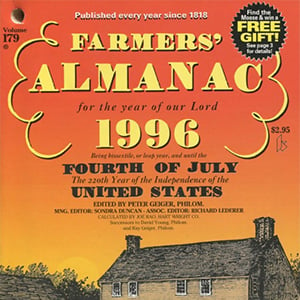
1996
The first retail edition was released in 1995, but the first orange cover was revealed in 1996.

1997
FarmersAlmanac.com is launched bringing the timeless appeal of the Farmers’ Almanac to a worldwide audience.
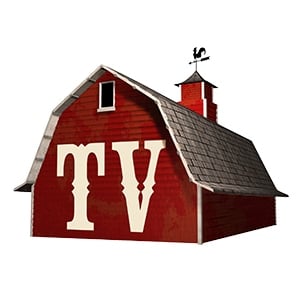
2006
Farmers’ Almanac TV debuts on more than 200 public television stations in 38 states. The show remained on the air for two seasons.

2007
FarmersAlmanac.com is revamped with more regularly updated calendar information and new content pages including Home & Garden and Astronomy.

2008
Farmers’ Almanac joins Twitter and launches its Facebok page shortly thereafter (now you can also find us on Instagram, Pinterest, and YouTube).

2010
FarmersAlmanac.com undergoes a complete overhaul, further expanding our online content; soon after, the web site rolls out a paid Premium Membership level, giving users access to a year of continuously-updated calendar information.

2016
The Farmers’ Almanac Facebook page reaches 1 million followers!
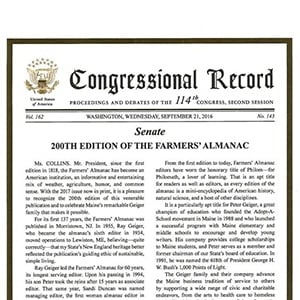
2016
Maine Senator Susan Collins issues a Congressional Record before the President and the U.S. Senate on 9/21/16 in honor of the Farmers’ Almanac’s 200th edition.

2016
Farmers’ Almanac releases its 200th consecutive edition!
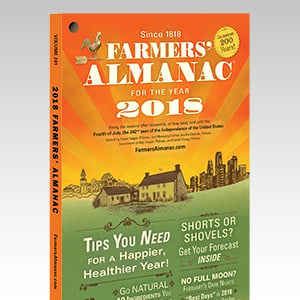
2017
To celebrate its official 200th year, the Farmers’ Almanac gets a new cover!

